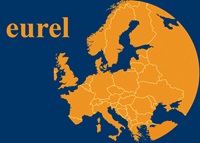The religious situation in Croatia during the last thirty years could be described as “dynamics in stability” (Črpić & Zrinščak 2009), meaning that the overall situation with high rates of confessional affiliation and declared religiosity of citizens has not changed much. Since Croatia is relatively homogeneous in its religious and national composition (over 80% Catholics and
90% Croats) and until a few years ago was a country of emigration, a new moment in recent years was the arrival of a larger number of immigrants from countries that are geographically and culturally distant from Croatia. These migrant workers come from countries such as Nepal, the Philippines, India and Bangladesh due to labor shortage. The new dynamics that are emerging in connection to this process include the increasing number of new immigrants and some indications that they want to organize themselves and practice their religion collectively, but also xenophobic and discriminatory outbursts on the other hand. It can therefore be assumed that these processes will have an impact on Croatia's religious image in the future. Immigrants from Asian countries attract the attention of scholars, but their religiosity is not yet the subject of extensive scholarly research. Our aim is therefore to start researching the religious life of migrant workers in Croatia. We focus on two groups of immigrant workers, Catholics (mostly Filipinos) and Hindus (mostly Indians and Nepalese), and how they practice their faith, what challenges they face and how their religious identities interact with Croatian society. The research is based on a qualitative methodology (semi-structured interviews) and is the first step in exploring the religious life and practice of labor immigrants in Croatia.
|
Faith on the Move: Exploring the Religious Life of Labor Immigrants in Croatia
1 : University of Dubrovnik
2 : University of Zagreb
|

 PDF version
PDF version
